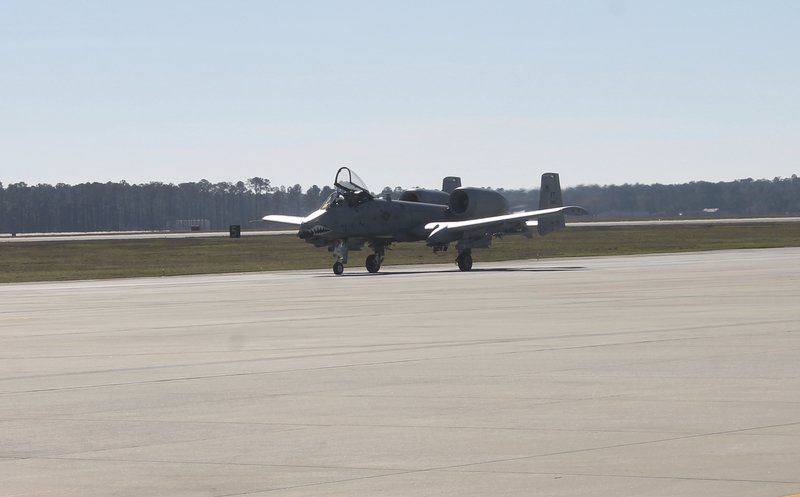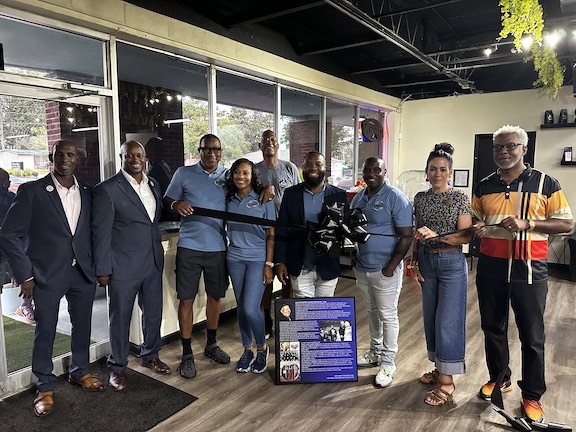Moody Air Force Base dates back to 1940s
Published 9:00 am Sunday, March 5, 2017

- Terry Richards | The Valdosta Daily TimesAn A-10C ‘Warthog’ low-level ground support plane prepares for takeoff in February from Moody AFB.
MOODY AFB — One of the last entires in the book “History of Lowndes County Georgia: 1825-1941” mentions that the U.S. Army Air Corps had started building a field north of Valdosta.
From humble beginnings of tents and temporary beaverboard headquarters grew an important military base with globe-girdling responsibilities and a major economic engine of Lowndes County.
Trending
Moody Air Force Base had its beginnings in 1940. Europe was already embroiled in World War II. The U.S. wasn’t in the fight yet, but growing military preparations meant army bases and air fields began sprouting up across the country. The Air Force did not yet exist as a separate uniformed service; it was officially a part of the U.S. Army.
“Valdosta Airfield” went to work in September 1941. It was later renamed after the late Major George P. Moody, a pilot who was killed in a flight test at Wichita Army Airfield, Kansas. The renaming took place Dec. 6, 1941.
The next day, the forces of Imperial Japan attacked Pearl Harbor, Hawaii, and the U.S. was at war.
During the war, the mission at Moody Field was pilot training. Along with Moody proper, the base also had control of auxiliary fields in Lake Park, Moultrie, Nashville and Quitman.
After the war’s end, the military faced a massive wind-down and found itself with many excess properties. The powers-that-be decided to turn the lights off at Moody, and the base went into “inactive status,” though it was still Army property.
In 1949, with the Korean War heating up and military expenditures increasing across the board thanks to the Cold War with the Soviet Union, Moody was reactivated as a permanent base.
Trending
By then, the Army was out of Moody’s picture; the National Security Act of 1947 pulled the Air Force free of Army control.
For the next quarter-century, Moody answered to Air Training Command, turning out pilots and trained ground crews. Perhaps the most famous of the base’s trainees from this period was a young Texas Air National Guard pilot named George W. Bush, whose career would eventually take him to the White House.
In 1975, Moody’s mission changed dramatically. The base was transferred to Tactical Air Command. Pilot training at the base ended as Moody became an active fighter base. F-4E Phantoms and F-16 Fighting Falcons filled the skies over Lowndes County in years to come.
Among the base’s Phantom pilots in the early 1980s was Rick D. Husband, who would eventually join NASA as an astronaut and command the doomed STS-107 Columbia flight in 2003, dying with the rest of the crew when the shuttle disintegrated in the skies over Texas while gliding in for a landing.
In 1991, the base faced a threat that galvanized the community: BRAC — the Base Realignment and Closure commission. Financial constraints led to a decision to shutter a large number of military bases, and Moody showed up on a preliminary list of targeted facilities.
A task force of local government and business leaders set to work picking apart the numbers the Air Force crunched in making its decision, and succeeded in getting Moody’s BRAC listing reversed by showing that part of the military’s cost-benefit analysis was based on faulty or obsolete data.
Today, the base is home to the 23rd Wing, including:
• The 23rd Mission Support Group, based at Moody AFB, which trains, equips and deploys personnel support forces to build, protect and sustain air bases worldwide for combat air operations;
• The 23rd Medical Group, based at Moody AFB, which provides outpatient medical, dental, occupational, environmental and preventive healthcare services in support of two combat ready wings;
• The 23rd Maintenance Group, which consists of seven maintenance squadrons located at three geographic locations. The 23rd Maintenance Group is responsible for the operation and quality of organization and intermediate- level maintenance and repair supporting combat-ready HC-130s, HH-60Gs and A-10Cs;
• The 23rd Fighter Group, which directs the flying operations for the USAF’s largest A-10C fighter group, consisting of two combat-ready A-10C squadrons and an operations support squadron;
• The 347th Rescue Group, which consists of one HH-60G rescue squadron, one HC-130P rescue squadron, one Guardian Angel squadron and one operational support squadron;
• Operational control over the 563rd Rescue Group at Davis- Monthan Air Force Base, as well as, the 563rd Rescue Group, Operating Location-Alpha at Nellis Air Force Base, Nevada.
Also at Moody is the 93rd Air Ground Operations Wing, the first wing to provide highly- trained ground combat forces capable of integrating air and space power into the ground scheme of fire and maneuver.
The 93rd AGOW is comprised of three operational groups, 17 squadrons, 10 detachments and 12 operating locations at 20 sites with 18 host Air Force bases.
The 820th Base Defense Group, based at Moody AFB, provides planning, training, equipping and preparation of the three security forces squadrons. They maintain a high operational tempo to support cyclic rotations of deployment, on-call, and reconstitution/ training status.
In Fiscal Year 2015, Moody had a combined military and civilian payroll of $300,810,413, according to figures provided by the base. Construction, services and commodities contracts totaled more than $$67 million. The total economic impact was $430 million, the bae’s website.
Terry Richards is senior reporter at The Valdosta Daily Times.





